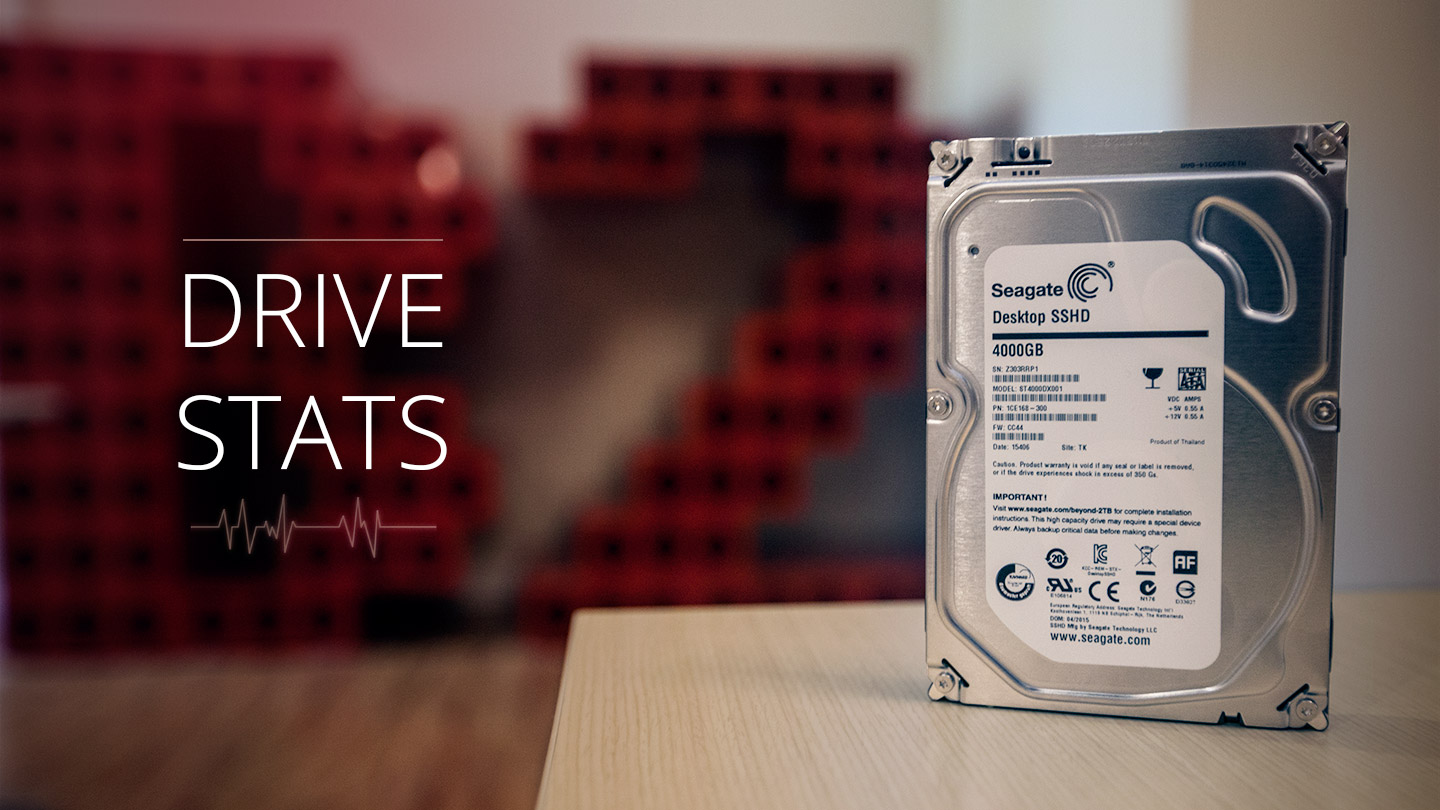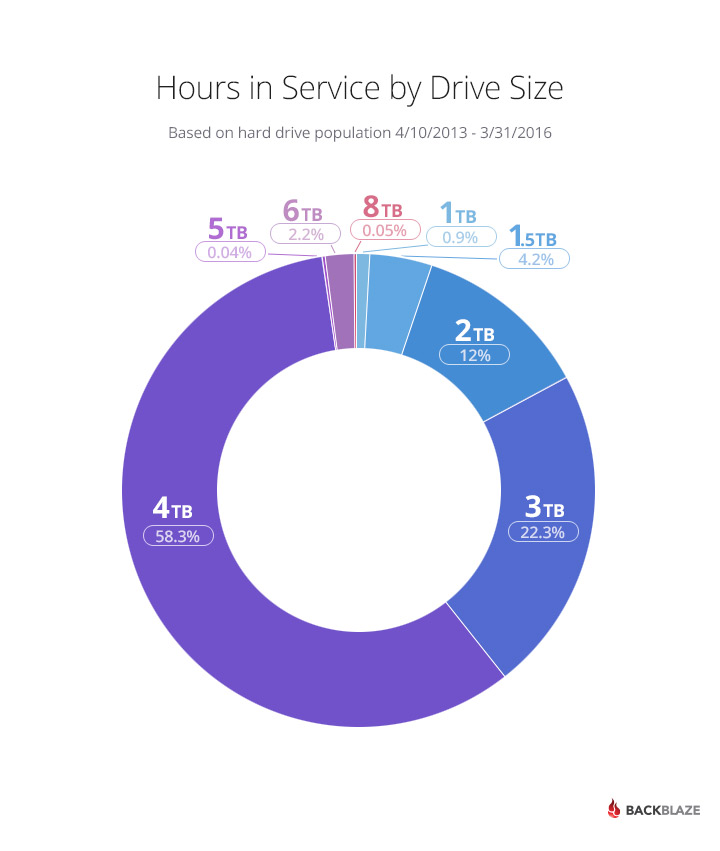Backblaze statistics: determine the best HDD

Another year has passed since the publication of statistics on the use of HDD , taking into account the number of failures in certain models of hard drives. And now there is a new statistic from Backblaze .
In the first quarter of 2016, 61590 HDD is used in the company's data center. This is 9.5% more than last year, when 56,224 disks worked in the DC of the company. The total operating time of all HDD servers of the company, in total in the past and present, is already more than 1 billion hours. This is about 42 million days or 114,155 years.
Failure statistics for Q1 2016

A few notes:
1. The total number of HDDs in the table is 61523, and not 61590. The reason is that models are excluded from the table if there are fewer than 45 copies available.
2. Several models have an annual failure rate of 0.00%. They had no failures in Q1 2016.
3. Some indicators are expressed in too small numbers. For example, Toshiba’s HDD with a capacity of 3 TB has a failure rate of only 8.56%. This is just one failure, which is not enough to make a decision.
4. The annual failure rate is just 1.84%. This is less than ever before.
Cumulative performance
The company began collecting statistics on HDD on April 10, 2013, three years ago. The table below shows the total figures for the entire period.

One Billion Disk Hours
As mentioned above, the total operating time of all hard drives used by the company in the past and working now is one billion hours. Here is a breakdown of the running time of individual models.

The column “others” is models that were not displayed, there are fewer than 45 of them in the company.
What are the best HDDs?
Model breakdown

HGST drives, especially 2 and 3 TB, performed better than others. Next come Seagate HDDs for 4 TB, bought about a year ago.
But the breakdown by hard drive size:

4 TB HDDs have been around for about 580 million hours. The company has a total of 4,841 disks for 4 TB, which means the average lifespan of an individual HDD is about 503 operation days or 1.38 years. The failure rate for such disks is only 2.12%.
Reliability HDD of various manufacturers
Most of the hard drives in the company - from HGST and Seagate. But there are systems from other manufacturers. The diagram below shows the percentage of disk failures of various companies, with the breakdown going on by years, from 2014 to 2016.

Why does the company have models in quantities less than 45 pieces?
There are several reasons:
1. Initially there were more than 45 pieces, but some disks failed, and we replaced them with other models HDDs;
2. They came to us within the framework of the program Drive Farming several years ago, and we received only a few pieces of disks of the same model. We love to unify equipment, and prefer to work with a large number of systems of the same model, but in general we use everything that is;
3. We built several Frankenpods (prefabricated storage pods) with disks of equal volume but different models and manufacturers.
Anyway, if there are less than 45 such disks, they are not included in the statistics, only general data is available for them.
Why not Toshiba and Western Digital?
The company is often asked why it does not buy more disks of these companies. The short answer is “we are tired.” The fact is that now the company requires large batches of disks, 5000-10000 copies. As for Toshiba, Backblaze does not consider these discs as the best price-performance ratio.
As for Western Digital, Backblaze regularly receives interesting offers, but every time something goes wrong and the deal fails.
What about 6.8 and 10 TB models?
The company uses a small number of models of disks of this size, since the issue of price for TB is still relevant for large HDDs, the pricing policy is not yet optimal. The second problem is the availability of large batches of disks of such volume. For example, 1200 HDD is required to fill Backblaze Vault from 20 Storage Pod 6.0 servers. In a month, the company loads about 3 Backblaze Vaults repositories, and it is still difficult to find a large number of copies of large disks. At the moment, the optimum is 4 TB, here the price per TB ratio is excellent, and there are many such models.
What drives are considered failed?
The disk does not turn on or is not recognized in the OS.
The disk is not synchronized or does not save synchronization in the RAID.
SMART statistics give inappropriate values.
For reference: Backblaze Company specializes in online backups. Using the service, users upload backup copies of their data to the cloud in the company's data center. Data is distributed across 20 shards. Backblaze claims to store over 200 petabytes of data.
